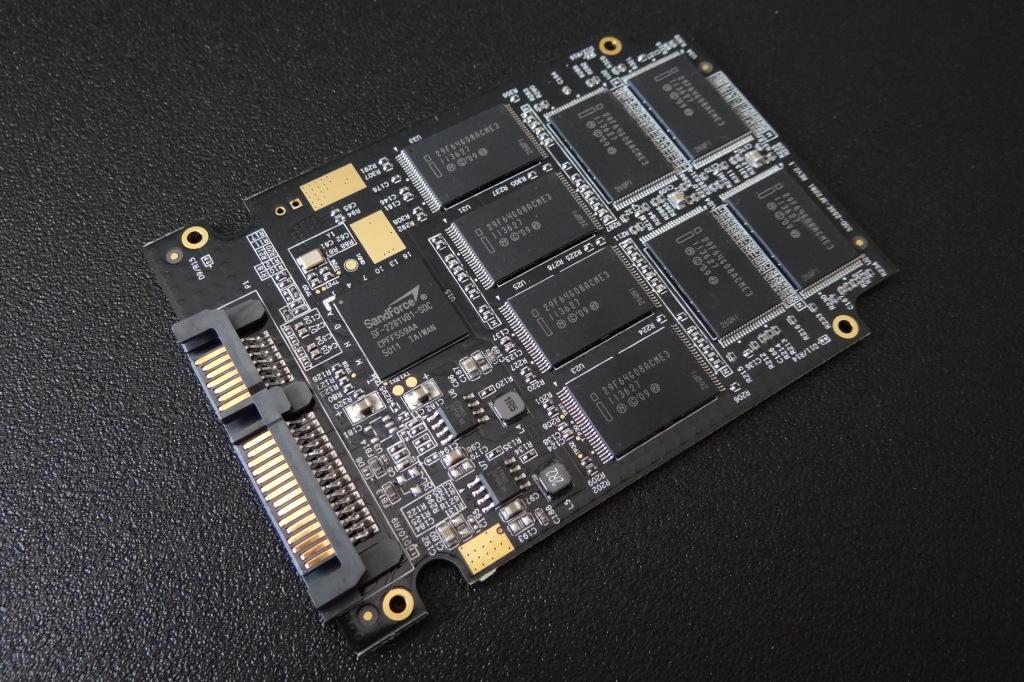REPORT ANALYSIS AND FINAL THOUGHTS
BIWIN may be a new name and a new company to North America but, with over 100, 000000 flash storage sales to date, they are definitely no new comer to the flash scene. A quick look at their product line shows their strength in the business and enterprise sector with SSDs available in 1.8″, 2.5″, mSATA, mSATA mini. half slim, as well as eMMC Embedded form factors.
The S836 Elite SSD is yet another of the LSI SandForce regime and this speaks to performance, durability and quality. There is no coincidence in the fact that all but two mainstream SSD manufacturers have shaken hands with LSI SandForce at this point, these being Samsung and Crucial/Micron.
 Performance of the S836 Elite stands on its own as it’s performance in PCMark Vantage produced the highest result we have seen to date for a 120GB variant, and by a margin. Even with any question one might have of the high sequential write performance while testing with incompressible data samples, the combination of the LSI SandForce SF-2281 processor and Intel premium synchronous NAND flash memory has done this SSD very well. This was highlighted in PCMark Vantage transfer speeds that were supported by AS SSD Copy Test benchmarks.
Performance of the S836 Elite stands on its own as it’s performance in PCMark Vantage produced the highest result we have seen to date for a 120GB variant, and by a margin. Even with any question one might have of the high sequential write performance while testing with incompressible data samples, the combination of the LSI SandForce SF-2281 processor and Intel premium synchronous NAND flash memory has done this SSD very well. This was highlighted in PCMark Vantage transfer speeds that were supported by AS SSD Copy Test benchmarks.
Remaining factors to consider are availability and price and it hasn’t even been two weeks since BIWIN officially announced their North American presence to which they are already listed on Newegg. The prices indicated on the site show $169.99 for a 120GB S836 and $311.99 for a 240GB version which are nice to see considering that these will be the price point of a new release.
 For a company that has just hit the North American SSD market to put out a product that shows far better than any other of the same configuration is unheard of. Congratulations BIWIN as your first official SSD review is concluded with an Editors Choice!
For a company that has just hit the North American SSD market to put out a product that shows far better than any other of the same configuration is unheard of. Congratulations BIWIN as your first official SSD review is concluded with an Editors Choice!
 The SSD Review The Worlds Dedicated SSD Education and Review Resource |
The SSD Review The Worlds Dedicated SSD Education and Review Resource | 
Hmmm…
Good performance…check
Sizable company…check
Great looks…check
Looks like one to keep an eye on for sure.
OEM/ODM is their main focus of business
I’ve heard of Biwin
Interesting. Do you have any more details about where to buy?
“We’re just now getting Amazon and NewEgg set up and will have the first shipments to both of them to load in inventory in the next week or two.”
Joe James – BIWIN VP of Worldwide Marketing
I know Biwin. They are big in NAND industry.
I need more data such as whitepapers
having trouble installing Win 7, had to go back to setup and delete the partitions and reinstall 7 again. Does this put a lot of wear on the SSD? I know multiple reading and writing wears them out. Someone give me a piece of mind that I didn’t do something terrifying!!
Thanks
Dont worry; things will be fine. SSDs are not, by any means fragile. I have run one ofver with my truck as a matter of fact to prove a point some time ago.
I guess even if I do restore a full drive everday, wear should not be a significant problem. Hopefully I can get at least a decade before the NAND is worn out.
I want to upgrade my SSD and enable TRIM with a Non-Apple SSD. TRIM support does not get enabled by default. Had to go through terminal commands that I copied and pasted in the OS X Lion operating system.
Got a hold of ‘how to guide’ walk through process of enabling TRIM support in a OS X Lion environment.
Guide based on instructions digital_dreamer published on insanelymac forums.
https://www.insanelymac.com/forum/index.php?s=7c1df00258d785170d51ec1d14f26c63&showtopic=256493&st=0&p=1680183&#entry1680183
3 Steps:
1. Make back up of original IOAHCIBlockStorage file called IOAHCIBlockStorage.original.
Enter system password using “sudo”command, since modifying system files. Copy and
paste code to terminal window.
2. Code patches IOAHCIBlockStorage file, removes requirements to SSD made by Apple.
Copy & paste (should take less than a second).
3. Last step loads new patched file into the kernal. Terminal window takes about 10-15 sec
before a new line apprears.
Now reboot your system and verify TRIM is enabled through System Information on Serial-ATA device listing. Enable TRIM support.
To enable TRIM on an OS X Lion system requires an SSD that supports TRIM is installed. Enabling TRIM for long term sustained performance.
Do you have an enterprise solution?
I’m not currently using OCZ Vertex for my desktop SSD.
Oops…
I AM using OCZ Vertex now, but looking for an enterprise SSD.
A long day?!?
Do they have any embedded products?